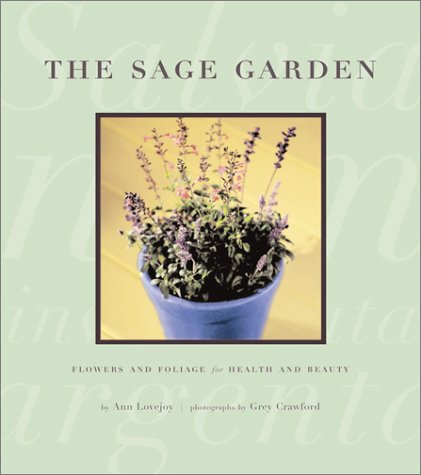With its remarkable scent and myriad varieties, this dusky beauty has long been celebrated by gardeners, chefs, and healers alike. Today, gardeners everywhere are discovering that growing sage is a simple and wonderfully rewarding pleasure. In The Sage Garden, horticultural expert Ann Lovejoy profiles her favorite varieties and provides straightforward counsel on cultivating the different types of sage for the particular climates in which they thrive. In addition, this gorgeously photographed book explains which kinds are best for drying, which for cooking, and which are simply meant to be enjoyed in the garden. Once ready to harvest, readers can turn to the section for health, beauty, and tantalizing culinary recipes. No gardener or sensualist should be without this bookIf, when you think of sage, you think only of the bottle of dried herbs on your spice rack, you’re missing out on the wide variety of wonders in the Salvia family. “Since ancient times, sage has been associated with at least the restoration of health and, in many cases, the healing of mind, body, and spirit,” says Ann Lovejoy, author, columnist, and gardening school proprietor. In addition, many sages make beautiful ornamental borders as they flower in all shades of the color spectrum.
Beginning with a comprehensive introduction of the history and uses of sage, Lovejoy then moves on to the different types of sage. Meadow sages, which are the easiest to grow for most people, are lovely to look at and can hold their own mixed in with other plants, shrubs, or herbs. For each type of meadow sage, Lovejoy explains how they do in a garden, with which plants they form pleasing partnerships, and lists the named forms of that variety. She does the same in the following chapters and sections on sages for bees, butterflies, and hummingbirds, in addition to classic border sages, bedding sages, dry-country sages, late-blooming sages, culinary sages, and scented sages. The last two chapters are devoted to cooking and making crafts with sage. For a traditional tonic tea, simply steep sage in hot water for 5 to 10 minutes, drain, and add honey to taste. Insert fresh common sage under the skin of a whole chicken for an aromatic and flavorful roast chicken, or use pineapple sage in a sorbet for a sweet and mellow dessert.
In The Sage Garden, Lovejoy not only shares her extensive knowledge, she also infuses each page with her love for the herb. The photographs by Grey Crawford are simple and evocative. The two merge in a paean to the ancient herb. –Dana Van Nest
Product Features
- Used Book in Good Condition






Comments are disabled for this post.